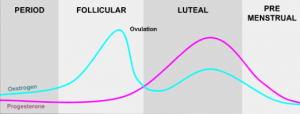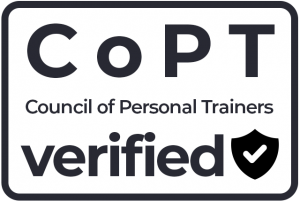(WTF) What The Flo?! – Part 1
The 4 phases of the menstrual cycle
By Louisa Hockley

Did you know there are four phases to your menstrual cycle? Or that these phases can affect how we train? Or even that you can map your cycle to enhance your training?
It’s okay if not, because, let’s be honest, this was never a major teaching point at school. There is a huge gender gap within the research which has caused limited education surrounding female physiology and in particular, the menstrual cycle.
One menstrual cycle lasts between 21-35 days and consists of 4 phases:
- Period Phase
- Follicular Phase
- Luteal Phase
- Pre-menstrual Phase
It is these phases which affect how we feel emotionally and physically. Pre-menstrual Syndrome (PMS) refers to the exhaustive list of symptoms we experience across our menstrual cycle. A few of the most common symptoms are listed below…
Common PMS symptoms:
- Headache
- Nausea/vomiting
- Bloating
- Cramps
- Back ache
- Sore breasts
- Fatigue
- Dizziness
- Food cravings
- Constipation
- Diarrhoea
The Hormones
Oestrogen and progesterone are the two main hormones associated with the menstrual cycle. The fluctuations of these hormones help prepare the female body for ovulation. The graph below shows how each hormone fluctuates over the course of one cycle.

- Period Phase (4-8 days long)
Progesterone and oestrogen are steady. Progesterone triggers the uterus to contract and expel the lining. Typical symptoms experienced include cramps, headaches, back ache, sore breasts and nausea.
- Follicular Phase (10-22 days long)
Oestrogen rises to its peak as the body prepares for ovulation. You may start to feel more confident, motivated and social during the follicular phase.
- Luteal Phase (9-16 days long)
Oestrogen has dropped and progesterone begins to rise. During the luteal phase, the egg travels down the fallopian tube as the body prepares for fertilisation. If the egg is not fertilised, you will get your period bleed. The increased progesterone levels can lead to increased calmness and reduced anxiety.
- Pre-menstrual Phase (5-7 days long)
The pre-menstrual phase occurs a day to a week before bleeding starts. Progesterone and oestrogen plummet and over 100 PMS symptoms have been reported during this phase.
Why is this important?
Understanding your cycle and how you feel physically and emotionally during each phase is a vital part of body literacy. Keeping track of each phase and what your hormones are doing can help you understand why you are feeling a certain way. It also allows you to plan your time accordingly, whether that’s socialising or training. There are many apps that can be utilised to track and map your cycle such as: Garmin, Ovia, Flo, Jennis, Apple Health
Stay tuned for the next blog post which explains how to maximise on gains in and out of the gym by adapting your food and training to fit in with your menstrual cycle.
It’s important to note that if you are on any form of hormonal contraception (i.e., the pill, implant, coil, injection etc), then you will not experience a natural menstrual cycle as both oestrogen and progesterone are kept at elevated levels. The bleeding experienced on any form of contraceptive is known as a withdrawal bleed or some may experience spotting – this is not you period. If you experience any irregularities with your period on or off contraceptives, please contact your GP for advice.

About the author
I am a Level 3 qualified Personal Trainer at Halo Gym and have an MSc in Sports Performance and a BSc in Sports Science. I have a keen interest in female health and take a holistic approach to women in sport, from the general public to elite female athletes. My goal is to educate and empower women, and to help them make gains in and outside of the gym.

